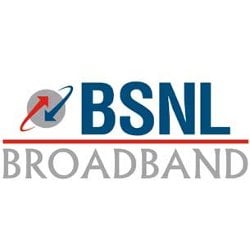Whats new on TelecomTalk.info |  |
- HCL Launches Android Based Tablets In India
- BSNL To Offer Static IP (on request) With Broadband Plans
- Tata Docomo Launches USSD Based Customer Service Platform
- Motorola and Huawei – Two tech Giants locking horns
| HCL Launches Android Based Tablets In India Posted: 29 Mar 2011 04:50 AM PDT
HCL rolled out its Android 2.2 Froyo OS based tablets in three flavors – HCL ME AE7, HCL ME AM7 (7 inch) and HCL ME AP10A (10 inch). HCL also ties up with India’s first 3G Mobile Service operator Mahanagar Telephone Nigam Ltd (MTNL) to bundled MTNL 3G SIM card with Free 6 GB Data Usage up to 3 months (2 GB per month) on purchase of HCL Tablets in Delhi HCL AE7-A1 priced at Rs.14990 is the cheapest version which comes with features as 7 inches Resistive Touch Display 800 x 480 pixel resolution, WiFi, Bluetooth 2.0, EVDO dongle USB Interface, 800Mhz Processor, 256MB Ram and a 2GB of Internal Storage and a 0.3 Mega Pixel camera. While HCL AM7-A1 Tablet priced at Rs.22990 is 3G enabled which comes with features as 7 inches Resistive Touch Display 800 x 480 pixel resolution, WiFi, Bluetooth 2.0, HSDPA/UMTS/ GSM/EDGE connectivity, 512 MB (DDR RAM)+ 8GB iNAND (In-Built )+Micro SD card for expandability up to 16GB, 1.3 Mega Pixel camera and Full HD 1080p (up to 25fps) Video support. The HCL AP10-A1 Table features a 10" wide High Definition and Seamless Display Quality, powered by a High Performance Dual Core 1 Ghz Processor with 1GB of RAM and 16GB of Internal Storage + Micro SD card for expandibility upto 32GB, WiFi, Bluetooth 2.0, HSDPA/UMTS/ GSM/EDGE connectivity. The AP10-A1 will cost Rs.32990. HCL ME Android Tablets at a Glance : |
| BSNL To Offer Static IP (on request) With Broadband Plans Posted: 29 Mar 2011 03:15 AM PDT
Right now all plans have dynamic IP, meaning you get IP allocated dynamically whenever you connect next, so every time it changes when you reconnect your net but in case of static IP one IP will remain static to your connection and it will remain the same even if you re connect your net next time. The static IP will be allocated ONLY to you. Broadband Plans (limited/unlimited) with Fixed Monthly Charge of Rs. 1000 and above but less than Rs. 1500 have to pay additional charges Rs 2000 yearly to obtain Static IP. Broadband Plans (limited/unlimited) with Fixed Monthly Charge of Rs. 1500 and above but less than Rs. 2799 will have to pay additional charges of Rs 1800 yearly to obtain static IP. One has to give separate written request to the local exchange to attain the same. |
| Tata Docomo Launches USSD Based Customer Service Platform Posted: 29 Mar 2011 12:33 AM PDT
The solution is a self-service system that allows Tata Docomo Mobile Service users to quickly access services and information on their mobile handset just few clicks away. By entering a short-code (*191#) in their phone, users are provided with a simple text menu which provides fast and direct access to various operator services such as Balance inquiry, Account Validity, Service Points, Last 3 Recharge history, Status of free usage. (Pool Balances), Start/Stop Value Added Services, Service Requests and lot more. Here are the Details : Dial *191# from your Tata Docomo Mobile Phone and explore the services as follows : Thanks to Amar Jagtap (Pune). |
| Motorola and Huawei – Two tech Giants locking horns Posted: 29 Mar 2011 12:11 AM PDT
This has become quite clear in a recent case involving a series of seemingly harmless sales of assets from one company to another that has now turned into an ever-changing rollercoaster ride for two of the world's biggest telecommunications players.
Recently, Nokia Siemens Networks (NSN) made a move to acquire the wireless network assets of Motorola, but the acquisition failed to obtain approval from the Anti-monopoly bureau of China's Ministry of Commerce. The review of the case has been postponed for 60 days, setting back plans to complete the transaction within the first quarter of 2011. Previously, the US District Court for the Northern District of Illinois had issued a preliminary injunction which prohibited Motorola from transferring any of Huawei's trade secrets to NSN in a proposed USD1.2 billion transaction. It also called for Motorola to hire a qualified third party to conduct an investigation to ensure Huawei’s confidential information had been securely removed from any assets being sold to NSN. The court order also permitted Huawei to perform an audit and other requests on NSN's maintenance services record on Motorola's equipment. In addition, there is a rumor circulating that the Motorola-NSN deal will now be renegotiated with a new price that excludes the GSM assets from the transaction. This is a significant recognition of Huawei's rights, as these are the very assets that contain Huawei's intellectual property that the company had sought to protect. This is also an implication that a sale of those assets would have in fact breached the court order that is in place. If this rumor is grounded in truth, it seems that Motorola may be fighting a losing battle. While this particular case has its own set of tribulations, it has been preceded by a litany of previous skirmishes. Just one day after Motorola announced the proposed USD1.2 billion deal with NSN, Motorola added Huawei to the list of defendants in a lawsuit that the company filed two years ago against a company named Lemko and its employees. The case was originally a dispute between a company and its employers. According to Motorola, the company filed a lawsuit against five former employees for stealing trade secrets. The first defendant, Shaowei Pan, was an ex-employee of Motorola who founded Lemko after he resigned from Motorola. The allegations lodged against the other four individuals were related to the illegal transfer of unauthorized confidential documents and trade secrets to Lemko in emails and other forms. It was evident at the time that the lawsuit against Lemko was completely unrelated to Huawei. This changed two years later as Motorola was announcing the sales of its network equipment business. To understand the significance of this timing, it is important to understand the ten-year partnership between Motorola and Huawei. Ten years ago, as a newcomer to the telecom market, Huawei collaborated with Motorola as an OEM in order to fuel its expansion and to grow its customer base. At that time, the partnership was a win-win solution, through which the two companies shared their complementary advantages, and their collaboration flourished during those years. Motorola spent over USD878 million to purchase Huawei's equipment and this cooperation and the equipment that was subsequently developed helped Motorola enhance its market position in the GSM and UMTS segments. Through the introduction of innovative technologies, however, Huawei established a stronger foothold and grew to become the world's second largest telecom equipment vendor. Its wireless market share grew from 10.9% in 2008 to 20.8% in 2010 (source: Dell'oro, February 2011) while sales revenue on wireless base stations soared to number two globally. Its products and solutions are currently deployed by 45 of the 50 top-tier telecom operators in the world. Huawei's technology development and market performance outgrew Motorola, which had lost its edge over the past decade with little improvement in network technologies. Motorola withdrew from the core telecom equipment space and relied instead on its partnership with Huawei, which was now developing wireless products under its own brand, enabling it to remain a player in the field. Motorola's move to sell its network infrastructure has long been rumored. It was also widely known that such a sale would involve significant IPR implications given the fact that Motorola's GSM network equipment was largely built upon its partnership with Huawei. While Huawei was seen as the most likely bidder for Motorola's assets, it did not actually participate in the bidding process, leaving Motorola no choice but to find other buyers and to also potentially face a difficult legal battle over the various Huawei-owned patents and technologies used in its products. In order to be at an advantage in any future legal proceedings, Motorola might have strategized that a preemptive move to launch an IP infringement case against Huawei would be to their advantage, as it would also raise questions about Huawei's integrity and record. As the February court ruling and other recent developments indicate, Motorola may have underestimated Huawei's determination to fight back. Huawei has long suffered from accusations on intellectual property issues. As early as 2003, Cisco filed a lawsuit against Huawei for intellectual property infringement. That case ended in a court settlement with Cisco withdrawing its suit against Huawei with no further requests for Huawei to make any changes to its products. There was no concrete evidence that proved Huawei had infringed on Cisco's intellectual property, but even long after that case was dismissed, Huawei continues to be dogged with a reputation for IPR infringement despite the company's track record for innovation. Moreover, Huawei was the world's second largest patent seeker across all industries in 2009, ranking ahead of every other telecom vendor. Capitalizing on this piece of history, Motorola chose to take legal action against Huawei by filing intellectual property litigation. Perhaps unexpectedly, Huawei chose to fight back this time rather than to take another hit to its reputation. The most powerful move that Huawei took to protect itself was to file a lawsuit in the Illinois court, citing that the deal between Motorola and Nokia Siemens Networks violated Huawei's trade secrets, in order to prevent Motorola from transferring Huawei’s intellectual property to Nokia Siemens Networks. By doing so, Huawei transformed from a passive player to one how is now taking an active approach to protect its interests. This resulted in the previously mentioned Temporary Restraining Order issued by the U.S. District Court which prohibits Motorola from transferring Huawei's confidential information to Nokia Siemens Networks, as well as an extended audit of the transaction to be conducted by the Ministry of Commerce. On a strategic level, what Motorola's management failed to understand is that Huawei is not the same company it was eight years ago. At that time, Huawei was a small player with no solid international grounding that had just started to expand globally. Today, it is not only the world’s second largest telecommunications equipment supplier, but its portfolio of customers is a testament to its technological leadership, and the company is doing whatever it takes to protect its important assets. |
| You are subscribed to email updates from TELECOM TALK To stop receiving these emails, you may unsubscribe now. | Email delivery powered by Google |
| Google Inc., 20 West Kinzie, Chicago IL USA 60610 | |












Save and Share!
Save Reddit Bookmark
Related Posts :